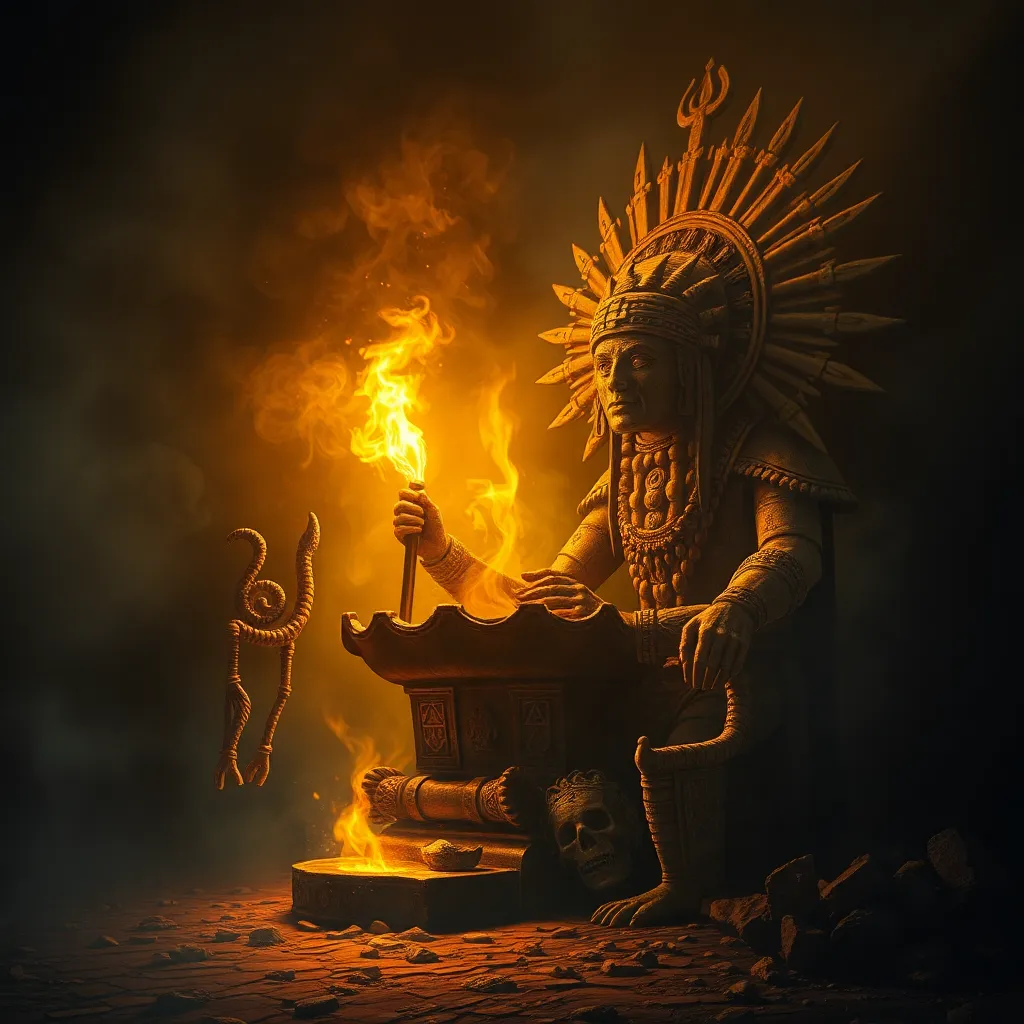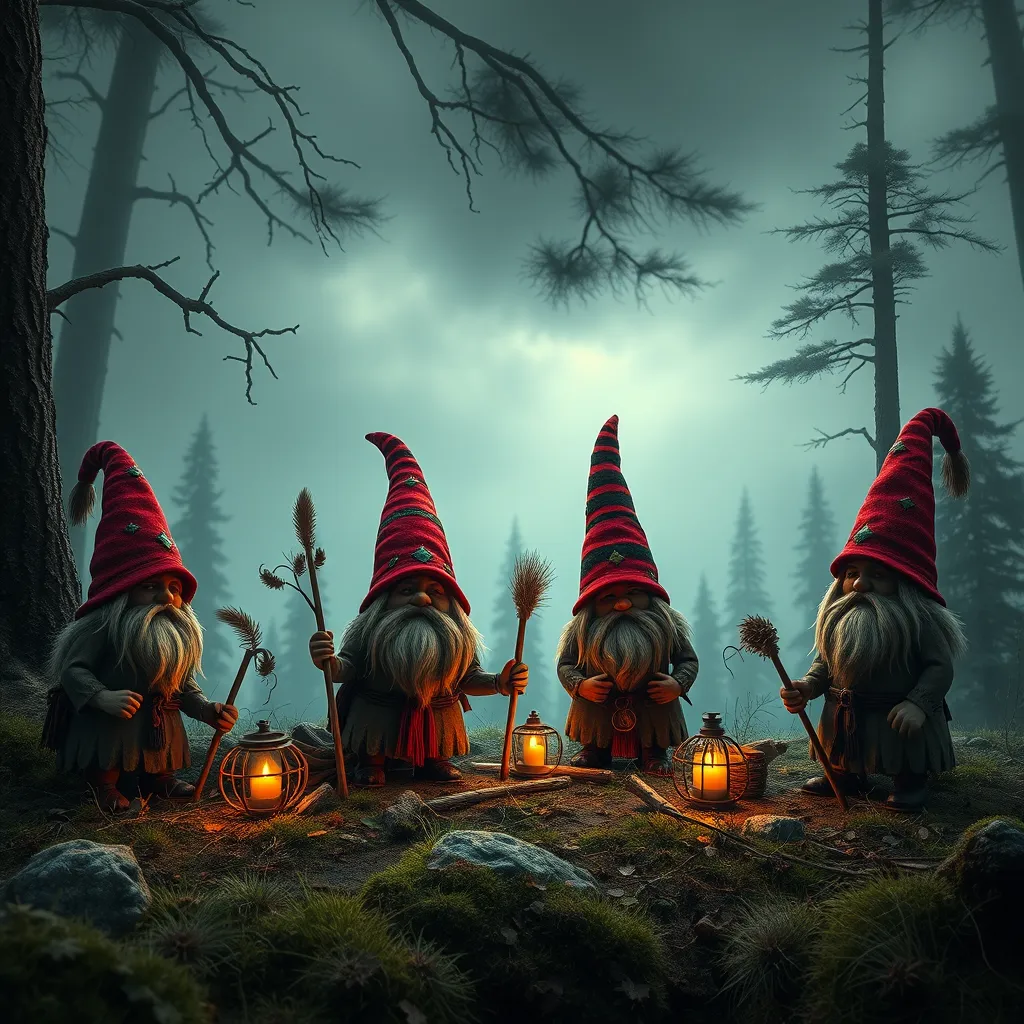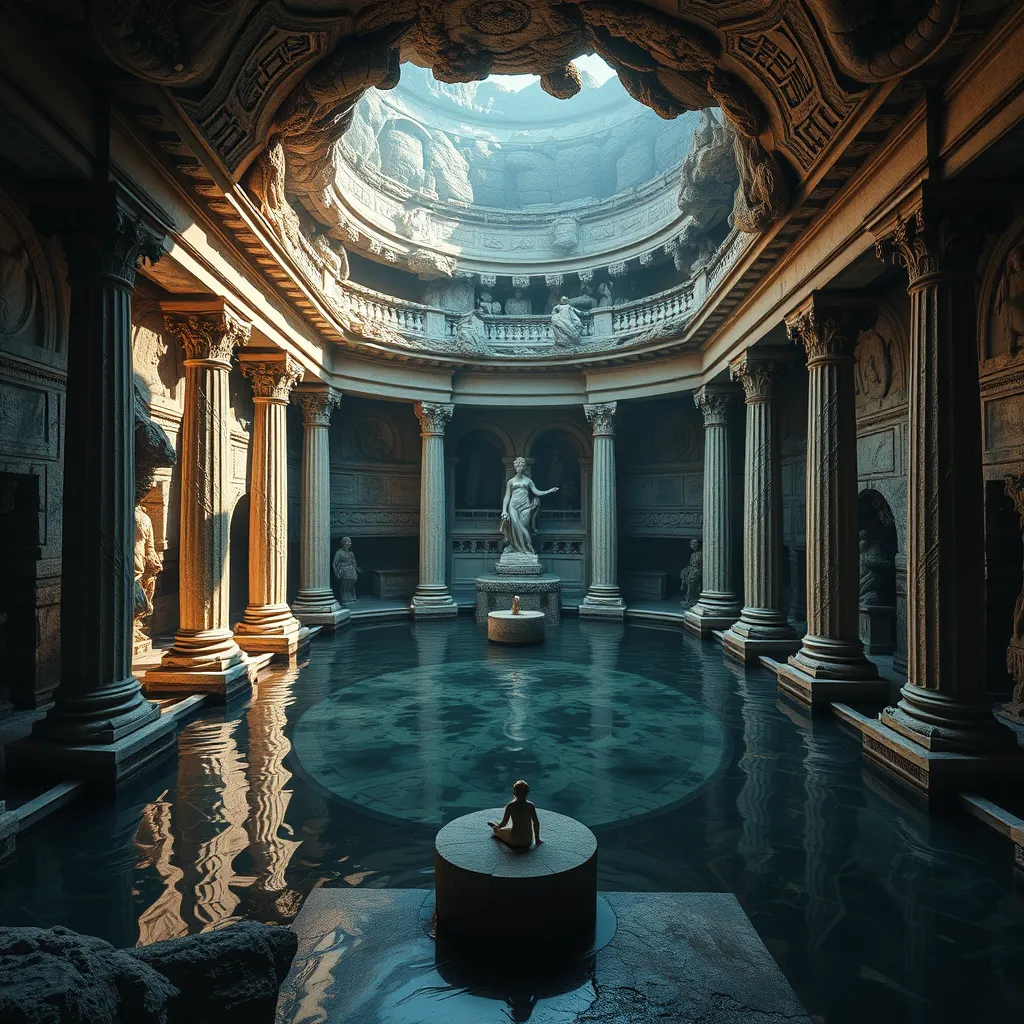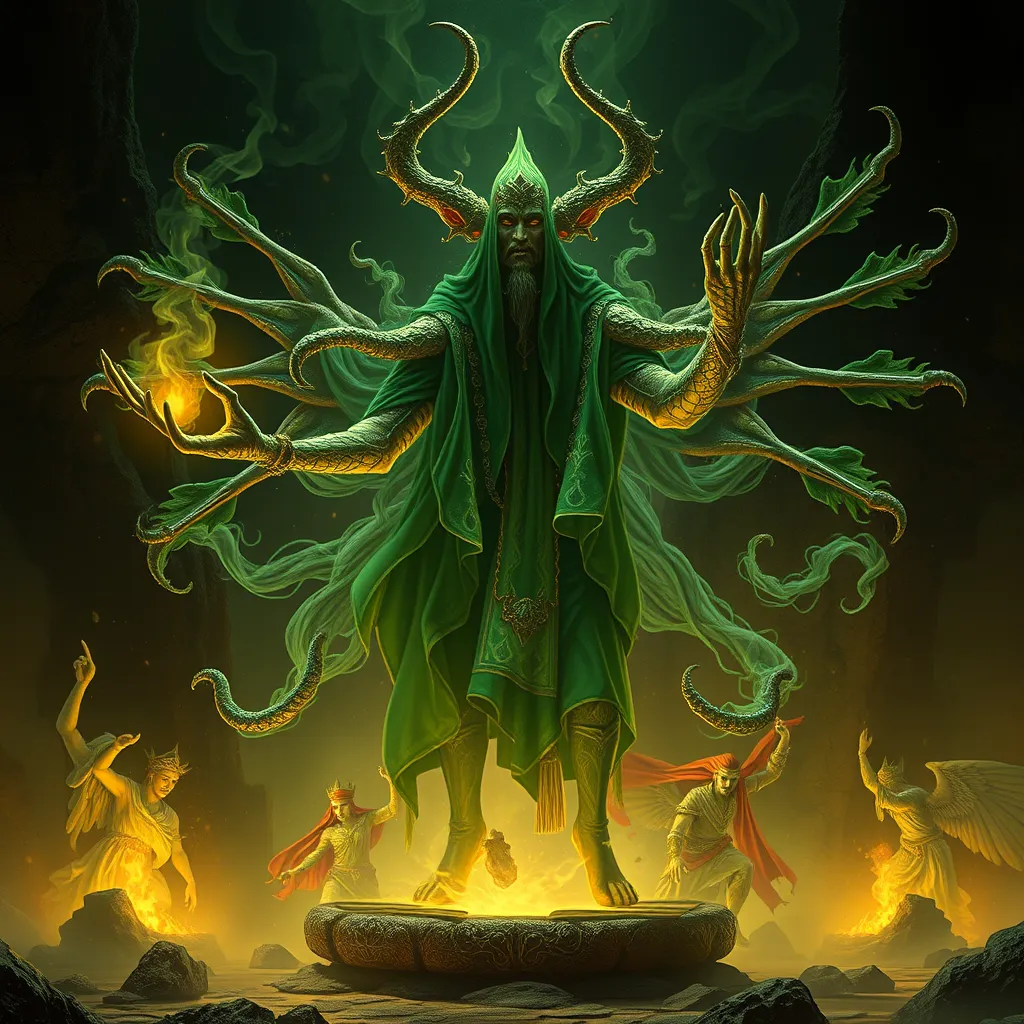From Sacrifice to Rebirth: Ah Puch and the Maya Cycle of Life and Death
I. Introduction
The Maya civilization, known for its advanced knowledge in astronomy, mathematics, and architecture, also had profound beliefs surrounding the concepts of life and death. Central to these beliefs was the understanding that life is a cycle, where death is not an end but a transformation. In this rich tapestry of mythology, Ah Puch, the god of death, stands out as a pivotal figure embodying the complexities of mortality and the afterlife.
This article aims to explore the themes of sacrifice and rebirth as represented through Ah Puch, examining how this deity encapsulates the Maya worldview and their understanding of existence.
II. Understanding Ah Puch: The Maya God of Death
Ah Puch, often depicted as a skeletal figure adorned with symbols of decay and death, plays a crucial role in Maya mythology. He is typically portrayed with a skull head and a body covered in bells, which signal his presence. His name translates to “the one who is born of the earth,” linking him to the fertility of the land and the natural cycle of life.
In art and literature, Ah Puch is represented in various forms, often associated with the underworld and the trials that souls must endure after death. His imagery includes:
- Skulls and bones
- Serpents and jaguars, signifying transformation and power
- Symbols of decay and rebirth, highlighting his dual nature
Ah Puch’s influence permeates Maya views on mortality, framing death as a necessary passage that leads to renewal and rebirth.
III. The Concept of Sacrifice in Maya Culture
Sacrifice held a significant place in Maya society, rooted in the belief that offerings were essential to maintain cosmic balance. The Maya engaged in various forms of sacrifice, which included:
- Human Sacrifice: Often performed during significant ceremonies, these sacrifices were believed to appease the gods and ensure agricultural fertility.
- Animal Sacrifice: Animals such as birds, deer, and dogs were offered in rituals to honor the deities.
- Ritualistic Offerings: These included food, flowers, and incense, symbolizing gratitude and devotion to the gods.
The act of sacrifice was seen not only as a means to appease the gods but also as a way to reinforce social order and the connection between the divine and the mortal realms.
IV. The Cycle of Life and Death in Maya Beliefs
Maya cosmology is characterized by its cyclical nature, where life, death, and rebirth are interconnected. This perspective emphasizes that death is not a definitive end but a necessary transition to another phase of existence. The cyclical view of life can be encapsulated in the following concepts:
- The belief in multiple lives and reincarnation
- The idea that each death paves the way for new life
- The seasonal cycles of nature reflecting the cycle of life
In this framework, death is perceived as a doorway to new beginnings rather than a conclusion, aligning closely with the role of Ah Puch as both a harbinger of death and a facilitator of rebirth.
V. Ah Puch’s Role in the Journey of the Soul
In Maya mythology, the journey of the soul after death is a complex and treacherous path. Ah Puch governs the underworld, known as Xibalba, where the souls face various trials and challenges. These include:
- Crossing a river filled with obstacles
- Facing deities who test their worthiness
- Enduring darkness and fear before finding peace
The significance of rituals and practices, such as elaborate funerary rites, plays a crucial role in aiding the soul’s journey through these trials. Offerings made to Ah Puch and the ancestors are believed to provide the necessary support and guidance for the deceased.
VI. The Symbolism of Rebirth in Maya Culture
Rebirth and regeneration are central themes in Maya culture, reflecting the natural cycles of agriculture and the seasons. The connection between death and new life is evident in various aspects of society:
- The agricultural calendar, which depends on cycles of planting and harvesting
- Mythological stories that depict the resurrection of gods and heroes
- Festivals celebrating the transition of seasons, emphasizing renewal
Ah Puch embodies this duality; while he signifies death, he also plays a critical role in the process of rebirth, illustrating the inseparable links between the two concepts in Maya thought.
VII. Modern Interpretations and Cultural Legacy
The legacy of Ah Puch and Maya beliefs continues to resonate in contemporary culture. His influence can be seen in various artistic representations, literature, and media, where themes of life, death, and rebirth are explored. Examples include:
- Artistic interpretations in murals and sculptures
- Literary adaptations in modern storytelling and novels
- Film portrayals that draw on Maya mythology for inspiration
Moreover, the relevance of Maya concepts of life and death can be observed in discussions surrounding environmental sustainability, cultural preservation, and the importance of understanding diverse worldviews.
VIII. Conclusion
Ah Puch serves as a powerful symbol in the Maya cycle of life and death, representing the intricate balance between sacrifice and rebirth. His role highlights the Maya belief that death is merely a transition, paving the way for new life and experiences. The enduring themes of sacrifice and rebirth continue to offer profound insights into the human experience, urging us to reflect on our own understandings of life and death through a Maya lens.



